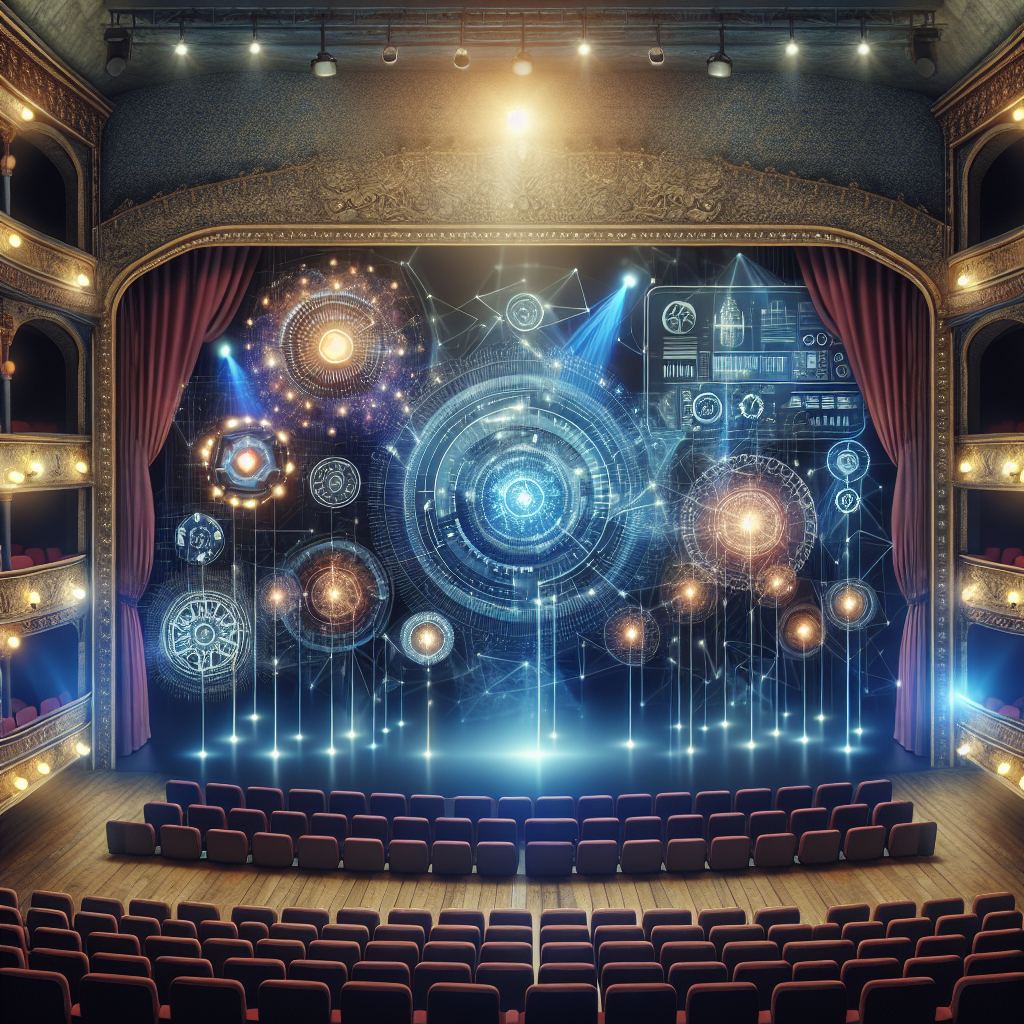Artificial Intelligence (AI) has made significant advancements in various industries, from healthcare to finance to transportation. One area that has seen a growing interest in AI is the world of theatre design. Set design and lighting play a crucial role in bringing a production to life, and AI has the potential to enhance these aspects in ways that were previously unimaginable. In this article, we will explore how AI is revolutionizing theatre design and the benefits it brings to the creative process.
AI in Set Design
Set design is a vital component of any theatrical production, as it helps to create the world in which the story unfolds. Traditionally, set designers would spend hours sketching out ideas, creating physical models, and collaborating with directors and producers to bring their vision to life. However, with the advent of AI, set designers now have access to powerful tools that can streamline the design process and offer new possibilities for creativity.
One way in which AI is being used in set design is through generative design software. Generative design uses algorithms to explore all possible design options based on a set of parameters, such as budget, space constraints, and aesthetic preferences. By inputting these parameters into the software, set designers can generate a wide range of design options in a fraction of the time it would take to do so manually.
Another way AI is being utilized in set design is through virtual reality (VR) and augmented reality (AR) technology. These technologies allow set designers to create immersive 3D models of their designs, which can be viewed and manipulated in real-time. This not only helps designers to visualize their ideas more effectively but also allows directors and producers to provide feedback and make changes easily.
AI in Lighting Design
Lighting design is another critical aspect of theatre production, as it helps to create mood, atmosphere, and focus on stage. Traditionally, lighting designers would manually adjust lights during rehearsals and performances to achieve the desired effect. However, AI is now being used to automate and enhance the lighting design process in ways that were previously impossible.
One way in which AI is being used in lighting design is through predictive analytics. By analyzing data on previous performances, audience reactions, and lighting cues, AI algorithms can predict the optimal lighting configurations for a given scene or moment in a production. This not only saves time for lighting designers but also ensures that the lighting is consistent and effective throughout the performance.
Another way AI is being utilized in lighting design is through smart lighting systems. These systems use sensors and AI algorithms to adjust lighting in real-time based on factors such as actor movements, audience reactions, and ambient light levels. This allows lighting designers to create dynamic and interactive lighting effects that enhance the overall theatrical experience.
Benefits of AI in Theatre Design
The integration of AI into theatre design offers a wide range of benefits for set and lighting designers, directors, producers, and audiences alike. Some of the key benefits include:
– Increased efficiency: AI tools can streamline the design process, allowing designers to generate more ideas in less time and make changes quickly and easily.
– Enhanced creativity: AI algorithms can suggest design options that designers may not have considered, leading to more innovative and imaginative productions.
– Improved precision: AI can analyze vast amounts of data and make predictions with a high degree of accuracy, ensuring that set and lighting designs are optimized for each performance.
– Cost-effective solutions: By using AI to generate design options and optimize lighting configurations, production companies can save time and money on materials and labor.
– Enhanced audience experience: AI-powered lighting effects and set designs can create a more immersive and engaging experience for audiences, enhancing their overall enjoyment of the production.
FAQs
Q: Can AI replace human creativity in theatre design?
A: While AI can offer suggestions and generate design options, it is ultimately up to human designers to make creative decisions and bring their vision to life. AI is a tool that can enhance creativity, not replace it.
Q: Will AI eliminate the need for human designers in theatre production?
A: AI may automate certain aspects of the design process, but human designers will always play a crucial role in interpreting creative briefs, making artistic decisions, and collaborating with other members of the production team.
Q: Is AI technology expensive to implement in theatre design?
A: The cost of implementing AI technology in theatre design can vary depending on the specific tools and systems being used. However, many AI tools are becoming more accessible and affordable, making it easier for production companies to incorporate AI into their design processes.
Q: How can theatre designers learn to use AI in their work?
A: There are a growing number of resources and training programs available to help theatre designers learn how to use AI tools in their work. Many software companies offer tutorials and support for their AI products, and there are also online courses and workshops dedicated to AI in theatre design.
In conclusion, AI is revolutionizing theatre design by offering new tools and technologies that enhance the creative process, increase efficiency, and improve the overall production quality. Set designers and lighting designers are now able to explore new possibilities and push the boundaries of traditional design concepts, thanks to the power of AI. As AI continues to evolve and become more integrated into the world of theatre, we can expect to see even more innovative and immersive productions that captivate audiences and push the boundaries of what is possible on stage.

